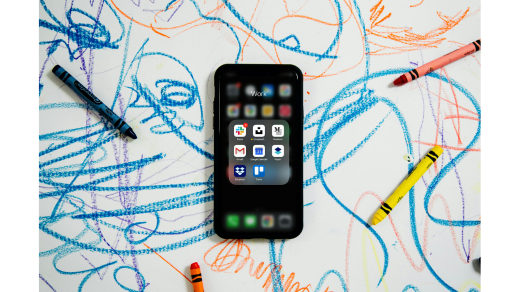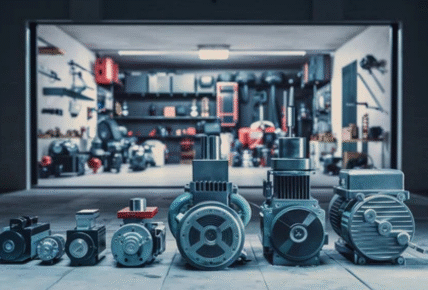1. What is a smart home device?
Answer:
A smart home device is anything that can be connected to the internet or to a local network and controlled either remotely or via automation. Generally, such devices use voice assistants, apps, or automation rules for their operations such as turning on and off lights, adjusting temperatures, or monitoring security.
2. Which voice assistants are commonly used in smart homes?
Answer:
The most popular voice assistants in 2024 are:
Amazon Alexa
Google Assistant
Apple Siri
Samsung Bixby
These voice assistants help control smart home devices like lights, thermostats, and security cameras with voice commands.
3. Are smart homes secure?
Answer:
Smart homes can be safe if proper precautions are taken. Use strong passwords, enable two-factor authentication (2FA), and keep devices updated with the latest security patches. For sensitive devices like cameras or locks, ensure they are from reputable brands with strong encryption.
4. What are the main types of smart home devices?
Answer:
The main types of smart home devices include:
Smart lighting (e.g., smart bulbs, light strips)
Smart thermostats (e.g., Nest, Ecobee)
Smart security cameras and doorbells
Smart locks (e.g. August, Schlage)
Smart speakers (e.g. Amazon Echo, Google Nest)
Smart plugs and outlets
Smart appliances (e.g. refrigerators, washing machines)
Smart sensors (motion, door/window, smoke detectors)
5. Can I access my smart home devices when I’m away from my home?
YES
Yes, most smart home devices can be controlled remotely via smartphone apps or web interfaces, provided you have an internet connection. You can thus control lights, cameras, thermostats, and even unlock doors while away.
6. Are smart home devices compatible with each other?
Answer:
In 2024, many smart home devices are designed to work with multiple ecosystems (e.g., Amazon Alexa, Google Assistant, Apple HomeKit). Some devices may integrate better with certain platforms. Opt for devices that support cross-platform compatibility or work with standards like Matter, which aims to unify smart home devices across different ecosystems.
7. How can I save energy with smart home devices?
Answer:
Smart home devices can help save energy by automating and optimizing energy usage. For instance:
Smart thermostats learn your habits to adjust heating and cooling efficiently.
Smart lighting can be scheduled or motion-activated to reduce unnecessary usage.
Smart plugs can turn off devices when not in use. These devices help reduce waste and lower your utility bills.
8. Can smart home devices improve security?
Answer:
Yes, smart home devices can enhance security with features like:
Smart cameras and doorbells (e.g., Ring, Nest Cam) for real-time monitoring and alerts.
Smart locks for remote access and better control over who enters your home.
Motion sensors and window/door sensors for intrusion detection.
Smart smoke and carbon monoxide detectors for alerts in case of emergencies.
9. Do I need a smart home hub?
Answer:
A smart home hub, such as Amazon Echo, Google Nest Hub, or Samsung SmartThings, can make controlling and automating devices easier if they use different communication protocols (Z-Wave, Zigbee, Bluetooth, etc.). But many newer smart devices can be controlled directly through voice assistants, making a hub unnecessary in many cases.
10. What is the Matter standard, and how does it affect smart homes?
Answer:
Matter is an open-source, royalty-free connectivity standard to better interoperate smart home devices across any platform (e.g., Amazon Alexa, Google Assistant, Apple HomeKit). In 2024, adoption of Matter grows, and it becomes easier for a user to set up and control smart devices made by various brands.
11. Are there smart home devices for helping with aging in place?
Answer:
Yes, many smart home devices are designed for seniors or people with disabilities. Examples include:
Smart Medical Alert Systems intended for emergencies.
Voice-controlled smart gadgets (lighting, locks, thermostats).
Smart wearables that measure health status (Fitbit, Apple Watch).
Smart fall detection systems.
These devices can increase safety and independence in older adults.
12. What are smart light bulbs, and how do they work?
Answer:
Smart light bulbs can be controlled remotely via smartphone apps, voice assistants, or smart hubs. They offer features like dimming, color-changing, scheduling, and automation. Some models even integrate with motion sensors or ambient light sensors to adjust automatically.
13. How do smart locks work?
Answer:
You can lock and unlock your door from any smartphone app or voice commands on smart locks. They can even be programmed to automatically lock or unlock your door at certain times of the day. Some models allow keyless entry, enable you to assign temporary access codes, or integrate with other smart home systems like Alexa or Google Assistant.
14. Can smart home devices be controlled with my smartphone?
Answer:
Yes, most smart home devices are controllable with the help of apps on your smartphone. If it is just turning the thermostat on, the lights on, or viewing the feed from the security camera, the phone does a great job providing a handy, remote control interface.
15. Which is the most beginner-friendly smart home device?
Answer:
Among those that can easily be installed and used by a novice are these ones:
Smart plugs: controls for lamps and appliances.
Smart bulbs: very easy to get lights automated.
Smart speakers: for example, Amazon Echo or Google Nest, are hubs for the control of other devices.
Smart thermostats: for example, Nest or Ecobee, which easily set up and save energy.
16. How do I automate my smart home?
Answer:
Automation in a smart home is done by
Routines: Most voice assistants and smart hubs enable you to set up routines (e.g., “Good Morning” turns on lights, adjusts the thermostat, and starts the coffee maker).
Motion sensors: Automate lights and appliances based on presence or absence.
Time-based triggers: Set devices to activate at specific times (e.g., lights turning off at night).
17. Are there smart home devices for pet care?
Answer:
Yes, there are several smart home devices for pet care, including:
Smart pet feeders: Automatically feeds pets on a schedule.
Pet cameras: Remotely monitors your pet (e.g., Furbo, Petcube).
Smart pet doors: Allows entry and exit by sensors or apps.
Pet health trackers: Monitors activity level and health metrics.
18. Can smart home devices be used for home entertainment?
Answer:
Yes, many smart home devices improve home entertainment:
Smart TVs can stream content from platforms like Netflix, Hulu, and Disney+.
Smart speakers (e.g., Sonos, Amazon Echo) provide high-quality sound with voice commands that can be controlled hands-free.
Smart remotes allow for a consolidated control over the TV, lights, and other devices.
19. How long do smart home devices last?
Answer: The lifespan of a smart home device varies by the type of device and manufacturer but generally:
Smart bulbs can last between 15,000 to 25,000 hours.
Smart thermostats can last between 5 and 10 years.
Smart locks may last 3 to 5 years depending on battery usage and quality. Always check the manufacturer’s specifications for exact lifespan estimates.
20. Can I use smart home devices to monitor my health?
Answer:
Yes, smart home devices can help monitor health through wearables and connected health devices. Some examples are:
Smartwatches (e.g., Apple Watch, Fitbit) to track heart rate, steps, and sleep.
Smart scales that track weight and body composition.
Smart air purifiers to monitor and clean the air.
21. What is a smart home ecosystem?
Answer:
Smart home ecosystem is a network of interconnected intelligent devices that can collaborate to provide users with an intuitive experience. It includes popular systems Amazon Alexa, Google Home, and Apple HomeKit. It connects those things such as lights, thermostats, locks, and security systems to conveniently place control and automation by voice.
22. Can smart home devices help with home maintenance?
Answer:
Yes, some smart devices are designed to assist with home maintenance:
Smart water leak detectors (e.g., Flo by Moen) help identify leaks early.
Smart air purifiers and humidifiers can improve indoor air quality.
Smart irrigation systems can optimize water usage for landscaping.
23. Are there any privacy concerns with smart home devices?
Answer:
Privacy concerns can arise with smart home devices due to the data they collect (e.g., voice recordings, location data). It’s important to:
Review privacy policies before buying
Update the software of your device regularly
Use 2FA and strong passwords
24. Do smart home devices interlink with my home security system?
Answer:
Yes, many smart home devices do interlink with the home security system. You can interlink a smart camera, lock, and sensors to a central security system so that one application or interface would allow you to control and monitor everything around. Some also offer professional monitoring.
25. What will smart home devices look like in 2024 and beyond?
Answer:
The future of smart homes in 2024 includes:
Increased AI integration for more intelligent automation.
Better interoperability between devices from different manufacturers.
Enhanced security features, including biometric authentication.
More energy-efficient devices with advanced energy-saving features.
As technology continues to advance, the smart home ecosystem will become more intuitive, integrated, and personalized.
Conclusion
Smart home devices are therefore changing the way we live at home, bringing convenience, security, and energy efficiency. By 2024, more options for making your home smarter and responsive to whatever you need will emerge. Indeed, this is possible if matched with careful consideration of your own preference and the availability of good compatibility of devices.





